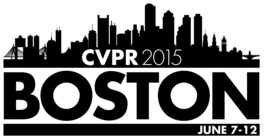-
Understanding Tools: Task-Oriented Object Modeling, Learning and Recognition
AbstractIn this paper, we present a new framework - task-oriented modeling, learning and recognition which aims at understanding the underlying functions, physics and causality in using objects as "tools". Given a task, such as, cracking a nut or painting a wall, we represent each object, e.g. a hammer or brush, in a generative spatio-temporal representation consisting of four components: i) an affordance basis to be grasped by hand; ii) a functional basis to act on a target object (the nut), iii) the imagined actions with typical motion trajectories; and iv) the underlying physical concepts, e.g. force, pressure, etc. In a learning phase, our algorithm observes only one RGB-D video, in which a rational human picks up one object (i.e. tool) among a number of candidates to accomplish the task. From this example, our algorithm learns the essential physical concepts in the task (e.g. forces in cracking nuts). In an inference phase, our algorithm is given a new set of objects (daily objects or stones), and picks the best choice available together with the inferred affordance basis, functional basis, imagined human actions (sequence of poses), and the expected physical quantity that it will produce. From this new perspective, any objects can be viewed as a hammer or a shovel, and object recognition is not merely memorizing typical appearance examples for each category but reasoning the physical mechanisms in various tasks to achieve generalization.
Related Material
[pdf][bibtex]@InProceedings{Zhu_2015_CVPR,
author = {Zhu, Yixin and Zhao, Yibiao and Chun Zhu, Song},
title = {Understanding Tools: Task-Oriented Object Modeling, Learning and Recognition},
booktitle = {Proceedings of the IEEE Conference on Computer Vision and Pattern Recognition (CVPR)},
month = {June},
year = {2015}
}
These CVPR 2015 papers are the Open Access versions, provided by the Computer Vision Foundation.
Except for the watermark, they are identical to the accepted versions; the final published version of the proceedings is available on IEEE Xplore.
Except for the watermark, they are identical to the accepted versions; the final published version of the proceedings is available on IEEE Xplore.
This material is presented to ensure timely dissemination of scholarly and technical work.
Copyright and all rights therein are retained by authors or by other copyright holders.
All persons copying this information are expected to adhere to the terms and constraints invoked by each author's copyright.

